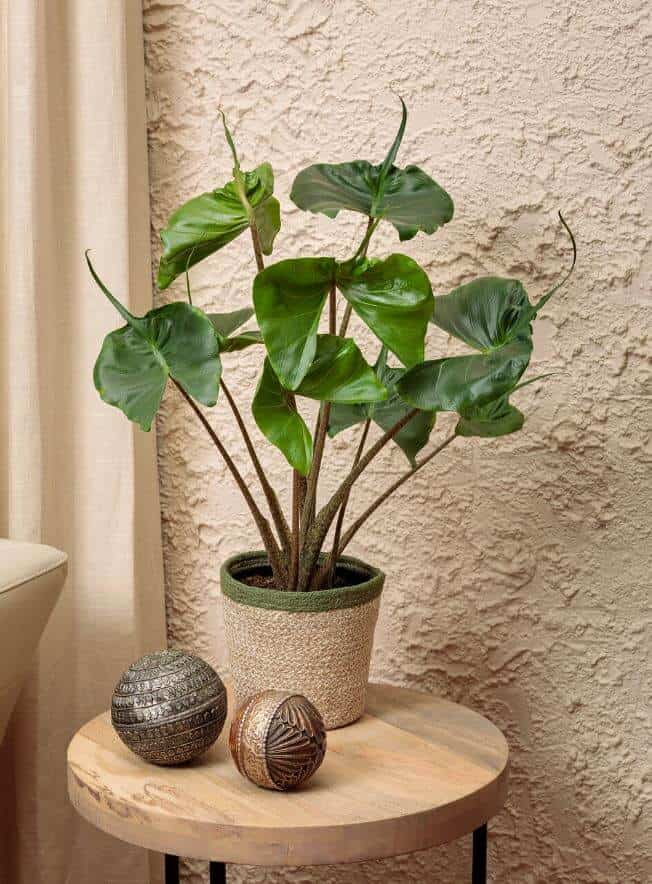Last Updated on September 9, 2023 by a Friendly Gardener
The Stingray plant is an Alocasia species botanically known as the Alocasia macrorrhiza “Stingray”. A truly unique eye-catching species, this tropical aroid’s large foliage resembles the Stingray found in the sea. Stems boast a pattern that looks a bit like an Alocasia zebrina. Native to Southeast Asian rainforests, this Araceae family member is not that easy to find.
Stingray plants are perennials that can grow to heights and widths of four feet when cultivated indoors. Outdoors these plants can reach fifteen feet in height and eight feet in width for a truly spectacular presence. They can be grown outside in USDA hardiness zones 9 through 11.
Stingray Plant Care
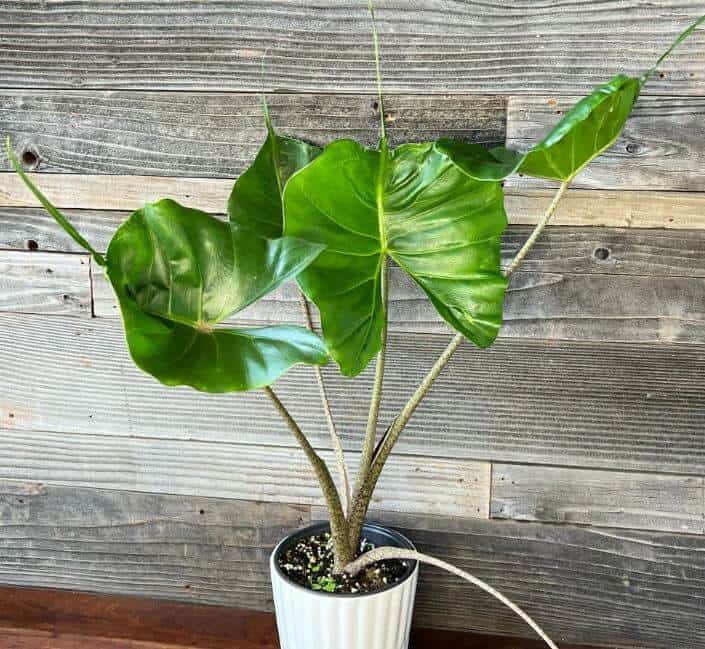
The Alocasia Stingray is like other alocasia species when it comes to caring. They love warm, humid environments and filtered, dappled sunlight together with consistently moist soil beds. As an alocasia, it will enter dormancy in the winter and foliage may drop. If its corm remains firm, the plant will regenerate upon awakening in the springtime. Alocasias will bloom, producing green or white blossoms, in the spring and summer even when cultivated indoors.
Soil
A Stingray plant requires well-draining soil that offers good water retention as these plants need consistently moist soil. An ideal blend consists of one part potting soil, one part perlite, and one part coco peat so that your growing medium is well-draining, fertile, and well-aerated. Soil pH should be acidic.
Light
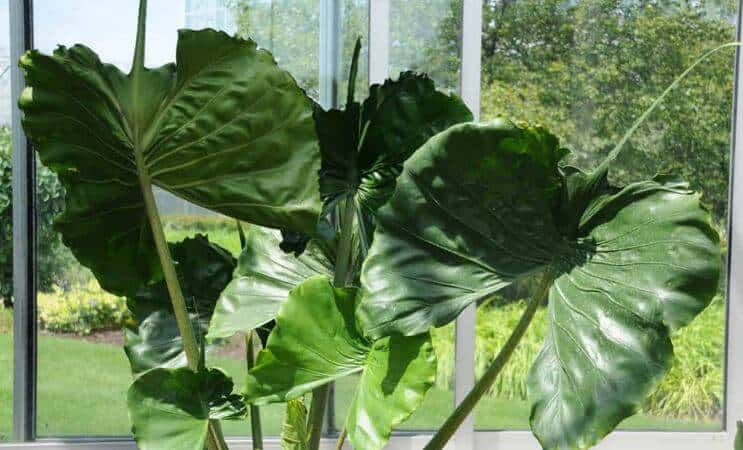
Your Stingray plant will do best when afforded a few hours of bright indirect light daily. It should not be exposed to direct sunlight unless for a short time at the end of the day. Direct sunlight will scorch the foliage. Blinds or sheer curtains can be used if the natural light is too harsh.
Water
Stingray plants do not like a dry growing medium, so they need a consistent watering schedule. Soil should remain damp but should not be soggy. As soon as the top inch is dry, you can water. Do verify that your plant’s container has excellent drainage.
Humidity
As a tropical plant, the Stingray loves humidity. Normal household humidity levels usually suffice. If, however, your home has drier air due to climate, central heating, or air conditioning, you’ll need to increase the humidity. Use a space humidifier, or a pebble tray to protect your plant from developing dry spots on foliage.
Misting is not a long-term solution if you need to increase humidity levels. Foliage may also suffer or develop other issues if left continuously wet. A humidifier is a better long-term choice.
Temperature
This tropical plant prefers warm environments, but as long as temperatures remain above 59°F, your plant should do fine.
Feeding
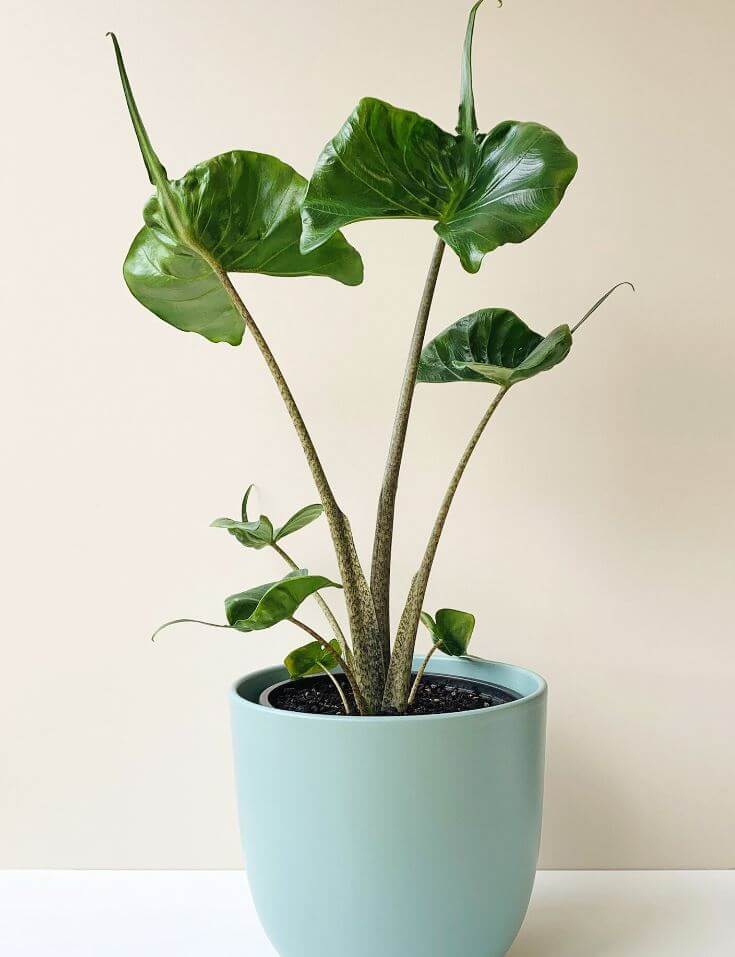
Alocasia species are heavy feeders, so your Stingray plant must be fed. During the growing season in spring and summer plan on feeding your plant every two weeks. Use a liquid, balanced houseplant fertilizer. Do not fertilize in autumn and winter as your Stingray plant will enter dormancy.
Pruning
The Alocasia does not require pruning but dead and dying foliage should be removed.
Repotting a Stingray Plant
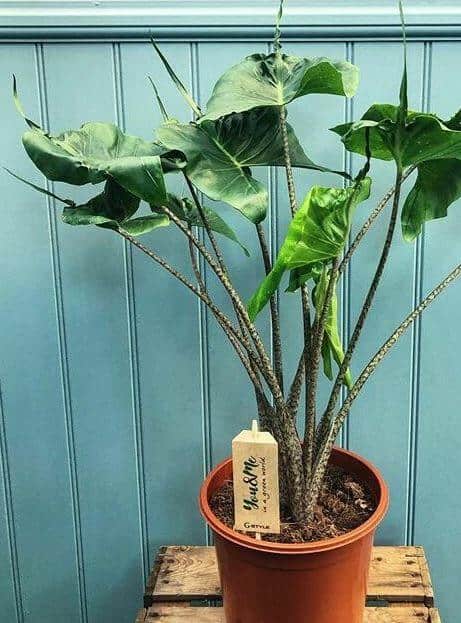
These plants enjoy being a bit root bound, so plan on repotting every two years. If your plant appears to be crowded or roots peek out of the drainage holes, you may need a larger pot. Only repot in spring or summer to prevent shock. When changing to a new pot, the size should only be two to four inches larger and no more.
Stingray Plant Propagation

Stingray plants can be propagated either by growing their corms or through division. Alocasia species develop corms around their root systems. Occasionally the corms will grow into new plants in the same container. Corms can be removed from root systems and grown in individual pots. To use corms, do the following:
- Remove the stingray plant from its container.
- Feel the root system for small round corms. They will be green or brown. If corms are attached to the roots, break the corm off at its base.
- Remove the corm’s outer husk to arrive at the green inner corm.
- Place the peeled corms in fresh water. They should not be submerged entirely but covered to approximately two-thirds.
- Using plastic, cover the dish containing the corms.
- Position the covered dish in indirect, bright light and add fresh water every couple of days so that the corms do not dry out.
- Growth should appear within a few weeks either as roots or leaves. Foliage should remain above the water while roots should be submerged.
- Once roots are at least two inches long, the corms may be transplanted into soil.
To propagate using plant division:
- Remove the stingray plant and gently remove the soil around the root system.
- Separate offshoots at the plant base with roots and corms.
- Place each offshoot in a small pot.
- Water the new plantlets and position them in a warm spot with indirect bright light.
- The soil of the new plants should be kept evenly moist.
Stingray Plant Problems
Alocasia species are susceptible to common houseplant pests such as spider mites, mealybugs, thrips, and fungus gnats. Try removing pests with a spray of water and then treat your plant with insecticidal soap or Neem oil.
Brown spots on foliage generally indicate that humidity levels are too low. Leaf drop can indicate insufficient light or a lack of humidity. Yellowing foliage can be a result of overwatering or underwatering. Overwatering may be due to poor drainage. Add perlite to the soil and check drainage holes. If underwatering is to blame, you are probably allowing the soil to dry out too much between waterings. Overwatering and soggy soil can also lead to root rot.
Stingray Plant Toxicity
Alocasia Stingray plants are toxic to dogs and cats as they contain insoluble calcium oxalates. If your pet chews on the plant, you may observe drooling and swelling of the lips. mouth, or tongue, difficulty swallowing, and vomiting. Contact your veterinarian if you suspect that your pet has ingested parts of this plant, or if you notice telltale symptoms.

